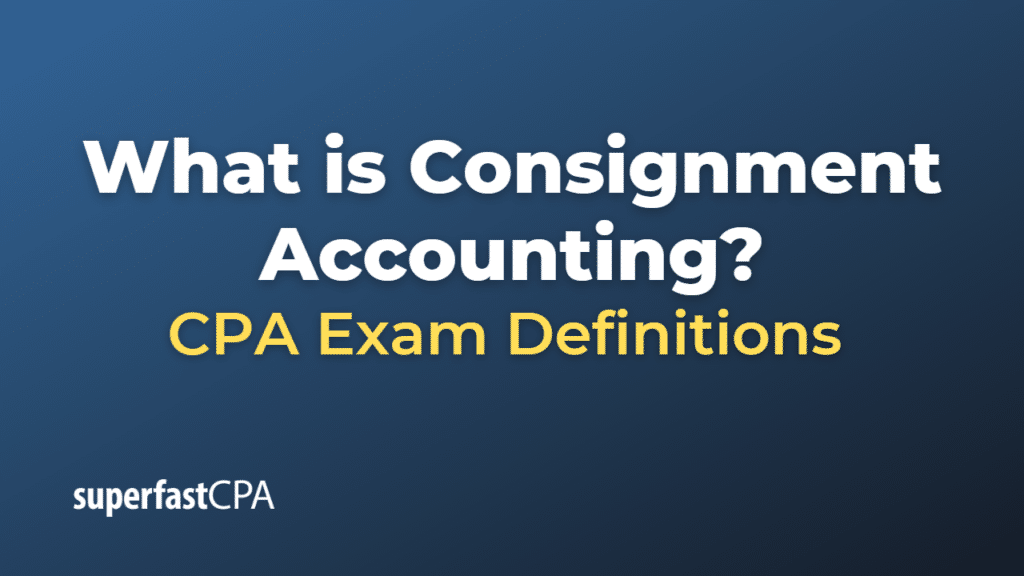Consignment Accounting
Consignment accounting refers to the accounting methods and practices used to record and report transactions related to consignment arrangements between a consignor and a consignee. In a consignment arrangement, the consignor (owner of the goods) entrusts goods to the consignee (agent) for the purpose of selling, storage, or shipment, without transferring the legal ownership of the goods.
In consignment accounting, both the consignor and consignee maintain separate sets of accounts to record transactions related to the consigned goods. Key aspects of consignment accounting include:
- Inventory: The consignor continues to record the consigned goods as inventory on their balance sheet, as they retain ownership of the goods until they are sold. The consignee does not record the consigned goods as their inventory since they do not own the goods.
- Expenses: The consignor typically records any expenses related to the consigned goods, such as shipping, storage, or insurance costs. These expenses are often recorded as a separate “consignment expenses” account, which may be reimbursed by the consignee, depending on the terms of the consignment agreement.
- Sales and commissions: When the consignee sells the consigned goods, they record the sales revenue and any commissions earned. The consignee then remits the sales proceeds (less their commission) to the consignor. Upon receiving the proceeds, the consignor records the sale, removing the sold goods from inventory and recognizing the revenue and any expenses associated with the sale.
- Unsold goods: If any consigned goods remain unsold after a specified period, they may be returned to the consignor, depending on the terms of the consignment agreement. In this case, the consignor would record the return of goods in their inventory.
Consignment accounting ensures that both the consignor and consignee accurately record and report the transactions related to consigned goods, providing a clear and transparent view of the financial aspects of their consignment arrangement.
Example of Consignment Accounting
Let’s consider a hypothetical example to illustrate the concept of consignment accounting:
Imagine that Susan, a jewelry designer, decides to consign a selection of her handcrafted necklaces to “Glamour Boutique,” a local fashion store. Susan (the consignor) and Glamour Boutique (the consignee) sign a consignment agreement that includes a 30% commission for the consignee on each necklace sold.
Here’s how the consignment accounting would work for both Susan and Glamour Boutique:
- Inventory:
- Susan records the consigned necklaces as inventory in her accounting records, as she retains ownership of the necklaces until they are sold.
- Glamour Boutique does not record the consigned necklaces as their inventory, as they do not own the necklaces.
- Expenses:
- Susan incurs shipping costs to deliver the necklaces to Glamour Boutique and records these expenses in her consignment expenses account.
- Sales and commissions:
- When Glamour Boutique sells a necklace, they record the sales revenue and the 30% commission they earned.
- Glamour Boutique then remits the sales proceeds (less their 30% commission) to Susan.
- Upon receiving the proceeds, Susan records the sale, removing the sold necklace from her inventory, recognizing the revenue, and recording the commission paid to Glamour Boutique as an expense.
- Unsold goods:
- If any of Susan’s necklaces remain unsold after a specified period, the agreement stipulates that Glamour Boutique will return the unsold items to Susan.
- In this case, Susan would record the return of the unsold necklaces in her inventory.
In this example, consignment accounting ensures that Susan (the consignor) and Glamour Boutique (the consignee) accurately record and report the transactions related to the consigned necklaces, providing a clear and transparent view of the financial aspects of their consignment arrangement.













